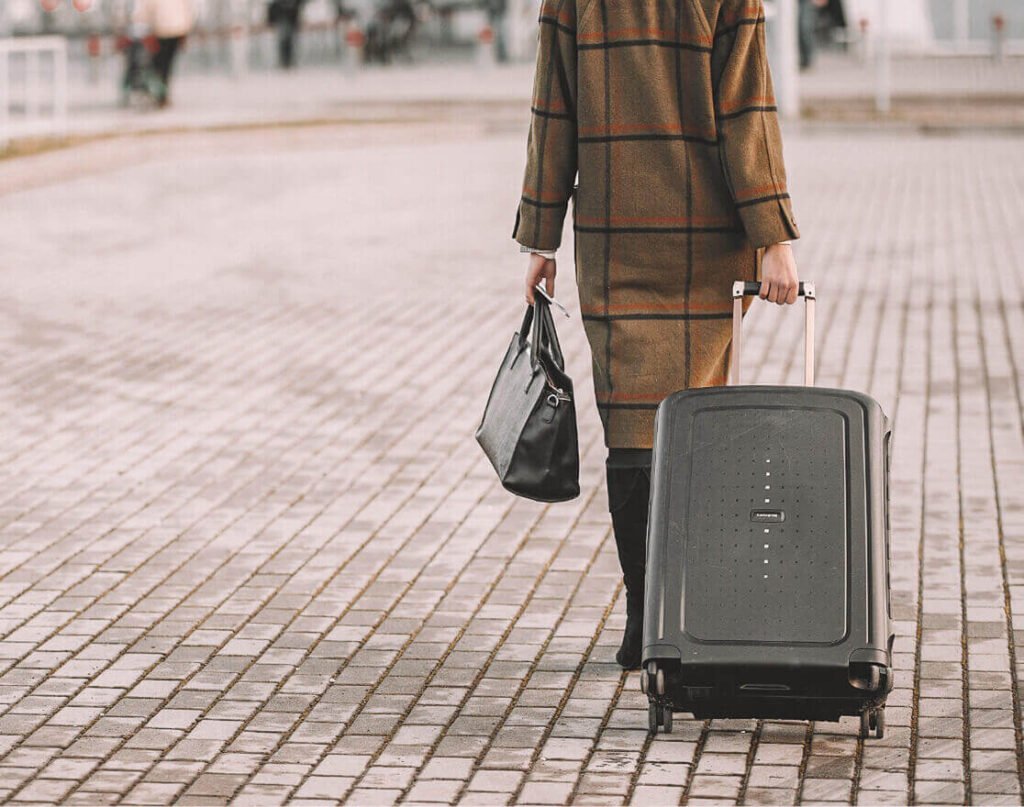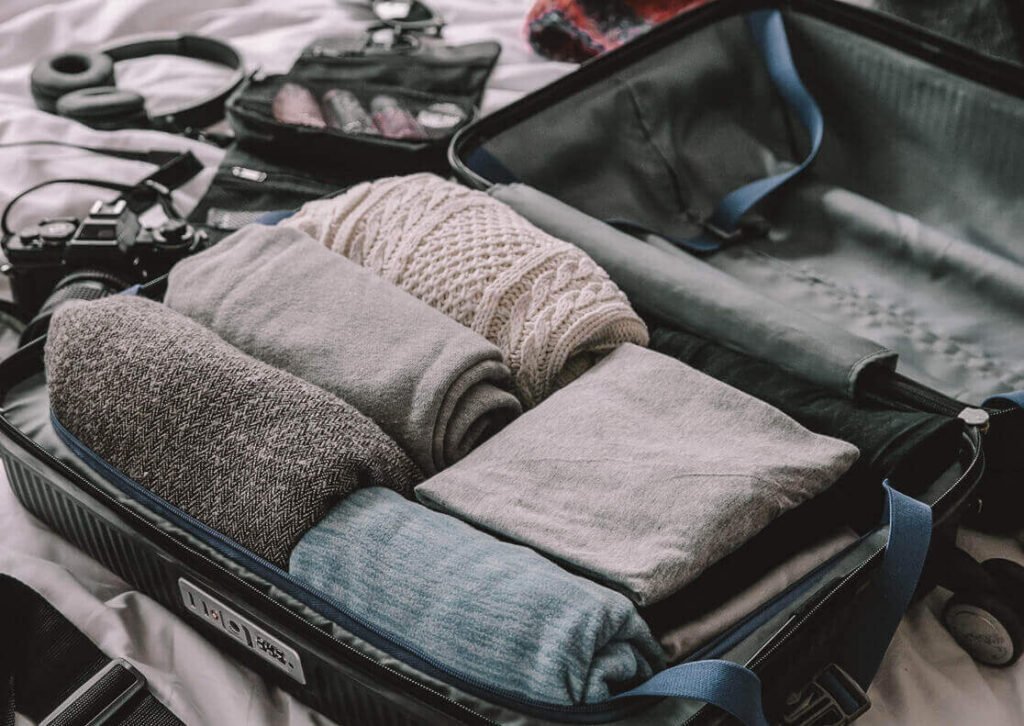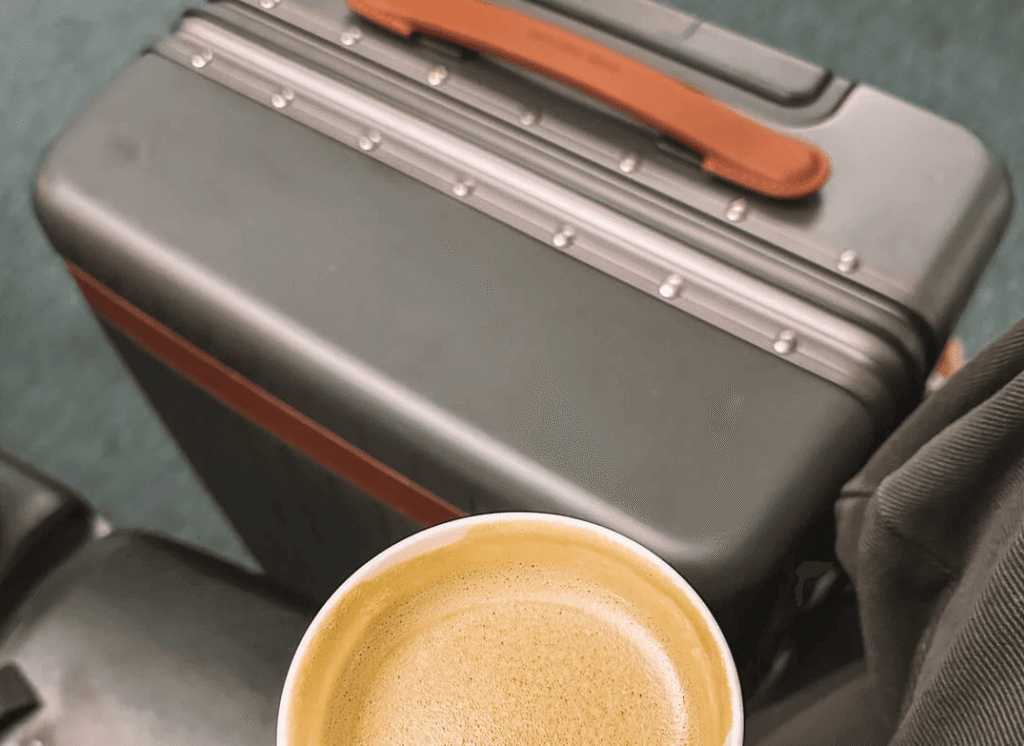After dragging a 70-pound suitcase through three European airports in 2019 (and paying $150 in overweight fees), I finally admitted I had a serious overpacking problem. That trip changed everything about how I approach packing, and now I consistently travel with just a carry-on for weeks-long adventures.
Here’s what I’ve learned about packing efficiently from years of trial and error—plus some embarrassing mistakes I hope you can avoid.
TL;DR: My Essential Packing Strategy
After testing dozens of methods, I’ve found the sweet spot: strategic layering with the 5-4-3-2-1 rule (5 tops, 4 bottoms, 3 shoes, 2 outerwear pieces, 1 week’s essentials), packing cubes for organization, and wearing your heaviest items on the plane.
This approach has saved me hundreds in baggage fees and made travel infinitely more enjoyable.
Why Efficient Packing Actually Matters (Beyond Just Saving Space)
I used to think overpacking was just a minor inconvenience until I started tracking the real costs. According to recent data from Upgraded Points, 19% of Americans have paid extra fees for overweight luggage, and travelers spend an average of $53 replacing forgotten items during trips.
But here’s what really convinced me to change: 32% of travelers admit to overpacking, yet 40% return home with clothes they never wore. I was literally paying to carry around dead weight, and I bet you are too.
The psychological aspect is real—travel anxiety makes us pack “just in case” items that create more stress than security. Once I understood this, I could finally break the cycle.
How to Pack a Suitcase Efficiently
My Suitcase Selection Strategy: Size Matters More Than You Think

Choose based on your trip length, not your packing habits. I learned this the hard way when I brought a massive checked bag for a 4-day business trip and spent more time dragging it around than actually working.
Here’s my current approach:
- Weekend trips (1-3 days): Personal item or small backpack only
- Week-long trips: Carry-on spinner (22″ maximum)
- Extended travel (2+ weeks): Medium checked bag, but I still pack a carry-on with essentials
For frequent travelers, I swear by hard-shell spinners with four wheels. They’re easier to maneuver and protect your belongings better than soft-sided options, especially when gate agents are throwing bags around.
If you’re confused about where to buy travel luggage, you can check some good brands online or go to your nearest store. Make sure the luggage you buy is strong enough to handle your items and falls under the airline’s weight restrictions.
The 5-4-3-2-1 Packing Method That Changed My Travel Game
I discovered this formula through trial and error, and it’s become my go-to for any trip lasting 5-10 days:
5 tops – Mix of t-shirts, blouses, and one nice shirt that works for multiple occasions 4 bottoms – 2 casual pants/jeans, 1 dressier option, 1 shorts/skirt
3 shoes – Walking shoes, dress shoes, flip-flops/sandals 2 outerwear pieces – Light jacket and one versatile layer 1 week’s worth of underwear and socks (plus 2 extra pairs of each)
This system and packing list have never failed me. I can create 15+ different outfits from these pieces, and everything fits comfortably in a carry-on with room for souvenirs.
Packing Cubes: The Game-Changer I Wish I’d Discovered Sooner
I was skeptical about packing cubes for years—they seemed like unnecessary gear. Then I tried them on a two-week trip to Southeast Asia and became an instant convert.
Here’s why they’re brilliant:
- Compression: I can fit 30% more in the same space
- Organization: No more digging through everything to find one shirt
- Dirty clothes management: I pack an extra empty cube for worn items
- Security checks: Everything stays organized when customs opens your bag
I use different-sized cubes for different items—large for pants and bulky items, medium for tops, and small for underwear and accessories. The investment (around $30 for a set) pays for itself in saved baggage fees and reduced stress.
Rolling vs. Folding: The Great Packing Debate (Settled)

After testing both methods extensively, I’ve learned the truth: it depends on the fabric and your suitcase type.
I roll these items:
- T-shirts and casual tops
- Jeans and cotton pants
- Pajamas and loungewear
- Underwear and socks
I fold these items:
- Dress shirts and blouses
- Formal pants and skirts
- Anything made from wrinkle-prone fabric
- Bulky sweaters
My hybrid approach: Roll softer items and place them at the bottom, then layer folded dress clothes on top. This prevents wrinkles in formal wear while saving space with casual pieces.
Weight Distribution: A Lesson I Learned from Flight Attendants
During a delayed flight, I chatted with a flight attendant who shared a brilliant packing tip: always pack heavy items closest to your suitcase wheels. This creates a better balance and makes rolling your bag effortless.
I now pack shoes and toiletries near the wheels, clothes in the middle, and lighter items like electronics near the top. It’s a small change that makes a huge difference when navigating airports.
Smart Layering: How to Pack Everything Without Playing Tetris
Instead of treating your suitcase like a puzzle, I use this systematic approach:
- Bottom layer (near wheels): Shoes, toiletries, heavy items
- Middle layer: Rolled casual clothes, packed tightly together
- Top layer: Folded dress clothes, electronics, easy-access items
- Lid compartments: Underwear, socks, cables, and daily essentials
I also stuff socks and underwear inside shoes—it maintains their shape and uses every inch of space.
The “Wear Your Heaviest” Rule That Saves Pounds
This tip alone has saved me countless baggage fees: wear your heaviest, bulkiest items on the plane.
For me, that usually means:
- Heaviest pair of shoes (boots or sneakers)
- Thickest jacket or sweater
- Jeans instead of lightweight pants
- Heavy accessories like belts or jewelry
I layer strategically so I can remove items once I’m on the plane. Sure, I might look slightly overdressed at security, but I’d rather do that than pay $50 in overweight fees.
Electronics and Toiletries: My Streamlined Approach
Electronics organization: I use a small tech pouch for all cables, chargers, and adapters. Everything has its place, and I never forget chargers anymore (previously my biggest travel failure).
Toiletries strategy: I maintain a dedicated travel toiletry kit that stays packed year-round. Travel-sized versions of everything I need, plus a few empty containers for products I can’t find in mini sizes. This alone prevents the scramble before every trip.
For liquids, I follow the 3-1-1 rule religiously: containers no larger than 3.4 oz, all fitting in one quart-sized clear bag. I learned to check these dimensions after having expensive skincare confiscated at security.
Read my guide on Choose the Best Makeup Travel Bag (11 Reviewed Picks)
Leaving Space: The Souvenir Strategy
I always pack about 20% less than my bag’s capacity. This serves two purposes:
- Room for things I buy during the trip
- Buffer space so I’m never struggling to close my hard-shell suitcase
I also pack a lightweight foldable tote bag that can become a personal item for the return flight if needed.
Common Packing Mistakes I Made (So You Don’t Have To)
Bringing “just in case” clothes: I used to pack for every possible weather scenario. Now I check the forecast and pack accordingly, with one backup option maximum.
Ignoring laundry facilities: Most accommodations have laundry options. I plan to do one load of washing on longer trips, which cuts my packing needs in half.
Packing too many shoes: Shoes are heavy and take up lots of space. I stick to my three-shoe rule religiously now.
Not testing my packing: I used to pack the night before travel. Now I do a test pack a few days early, live out of the suitcase for a day, and adjust accordingly.
My Pre-Trip Packing Routine
Three days before departure, I lay out everything I think I need. Then I remove about 30% of it—trust me, you won’t miss those extra items.
Two days before, I did my test pack and weighed the suitcase. If it’s over 90% of the airline’s weight limit, I remove more items.
The night before, I do my final pack, checking my list twice. I also take a photo of my suitcase contents—it’s helpful for insurance claims if luggage gets lost.
What I Wish I’d Known When I Started Traveling
Efficient packing isn’t about cramming more stuff into your suitcase—it’s about bringing less, choosing better, and organizing smarter. Every item should serve multiple purposes or be absolutely essential.
The biggest mindset shift for me was realizing that most things I “might need” can be bought at my destination if necessary. This freed me from anxiety-driven overpacking and made travel infinitely more enjoyable.
Most importantly, practice your packing system before big trips. Like any skill, it gets easier with repetition, and you’ll develop your own tricks that work for your travel style. Check out Travel Outfit Ideas That Will Make You Trendy & Comfy for packing inspiration.
And that’s it for this guide on how to pack a suitcase efficiently.
Happy travels, and may your suitcase zippers never struggle again!
//Josephine
FAQs
Is rolling or folding clothes better for saving space?
Based on my extensive testing, rolling works best for casual items like t-shirts, jeans, and pajamas, while folding is better for dress shirts and formal wear. I use a hybrid approach—rolling casual clothes for the bottom layer and folding dress clothes for the top to prevent wrinkles.
How do packing cubes actually save space?
Packing cubes compress your clothes and eliminate air gaps in your suitcase. I consistently fit 30% more using cubes compared to loose packing. They also keep everything organized, so you’re not creating chaos when you need one item.
What’s the 5-4-3-2-1 packing rule?
It’s my go-to formula for 5-10 day trips: 5 tops, 4 bottoms, 3 pairs of shoes, 2 outerwear pieces, and 1 week’s worth of underwear/socks. This creates multiple outfit combinations while fitting in a carry-on.
How can I avoid paying overweight baggage fees?
Wear your heaviest items on the plane, weigh your suitcase before leaving home, and stick to airline weight limits (usually 50 lbs for checked bags). I also keep a portable luggage scale for return trips when I’ve bought souvenirs.
What should I pack in my carry-on vs. checked bag?
Always pack essentials in carry-on: one change of clothes, medications, electronics, important documents, and valuables. This protects you if your checked bag gets delayed or lost.
What are the most commonly forgotten packing items?
According to recent surveys, toothbrushes/toothpaste (22%) and phone chargers (19.1%) top the list. I maintain a dedicated travel toiletry kit and tech pouch to prevent these oversights.
